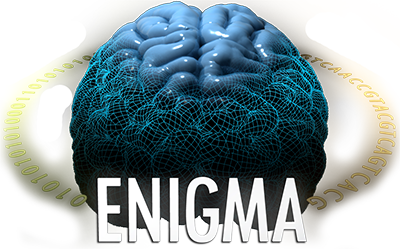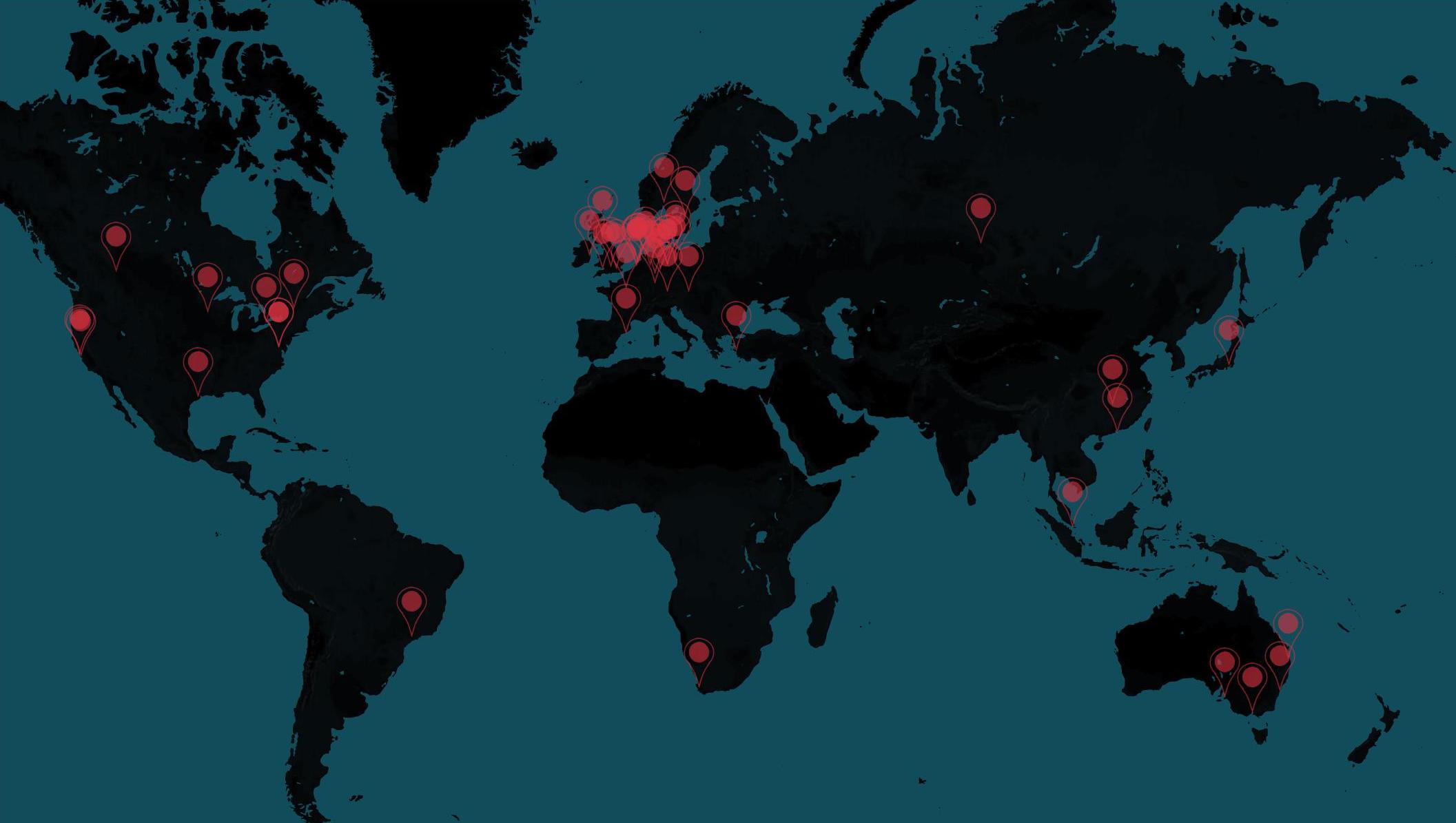The ENIGMA Major Depressive Disorder (MDD) Working Group is an international collaboration currently including 40 research samples from 14 different countries worldwide, including brain scans from around >5,000 MDD patients and >9,000 controls. The primary aim of our ENIGMA-MDD Working Group is to identify imaging markers that robustly discriminate MDD patients from healthy controls across many different samples using carefully a priori planned, standardized image processing and statistical analysis protocols. The ENIGMA MDD Working Group was established in 2012 by Prof Lianne Schmaal and Prof Dick Veltman (now former co-chair, upon retirement in 2024). The Working Group is currently led by Prof Lianne Schmaal (chair) and Dr Elena Pozzi (co-chair) at The University of Melbourne, Melbourne, Australia.
A list of participating groups (updated 2025) can be found here.
Click here to access our members page.
We are happy to welcome new cohorts at any time! If you would like more information and/or are interested in participating, please contact Prof Lianne Schmaal and Dr Elena Pozzi
Publications:
- Childhood adversity impacts on brain subcortical structures relevant to depression (Frodl et al. 2017 in Journal of Psychiatric Research)
- Subcortical brain structure and suicidal behaviour in major depressive disorder: a meta-analysis from the ENIGMA-MDD working group (Rentería et al. 2017 in Translational Psychiatry)
- Interactive impact of severity of childhood maltreatment, depression, and age on cortical brain structure: mega-analytic findings from a large multi-site cohort (Tozzi et al., 2019 in Psychological Medicine)
- White matter disturbances in major depressive disorder: a coordinated analysis across 20 international cohorts in the ENIGMA MDD working group (van Velzen et al. 2019 in Molecular Psychiatry)
- No Alterations of Brain Structural Asymmetry in Major Depressive Disorder: An ENIGMA Consortium Analysis (de Kovel et al., 2019 in American Journal of Psychiatry)
- Classification of Major Depressive Disorder via Multi-Site Weighted LASSO Model (Zhu et al., 2017 in Medical Image Computing and Computer Assisted Intervention − MICCAI 2017), click here for a copy of the article on arxiv.
- Brain Correlates of Suicide Attempt in 18,925 Participants Across 18 International Cohorts (Campos et al. 2017 in Biological Psychiatry)
- Brain Aging in Major Depressive Disorder: Results from the ENIGMA Major Depressive Disorder working group (Han et al., 2021 in Molecular Psychiatry)
- Subcortical Shape Alterations in Major Depressive Disorder: Findings from the ENIGMA Major Depressive Disorder Working Group (Ho et al., 2020 in Human Brain Mapping)
- Brain Structural Correlates of Insomnia Severity in 1053 Individuals with Major Depressive Disorder: Results from the ENIGMA MDD Working Group (Leerssen et al., 2020 in Translational Psychiatry)
- Brain Structural Abnormalities in Obesity: Relation to Age, Genetic Risk, and Common Psychiatric Disorders (Opel et al., 2021 in Molecular Psychiatry)
- Virtual Histology of Cortical Thickness and Shared Neurobiology in 6 Psychiatric Disorders (Patel et al. 2021 in Biological Psychiatry)
- Virtual Ontogeny of Cortical Growth Preceding Mental Illness (Patel et al. 2022 in Biological Psychiatry)
- Concurrent validity and reliability of suicide risk assessment instruments: A meta-analysis of 20 instruments across 27 international cohorts (Campos et al. 2023 in Neuropsychology)
- The role of educational attainment and brain morphology in major depressive disorder (Whittle et al. 2022 in J Psychopathol Clin Sci)
- Multi-site benchmark classification of major depressive disorder using machine learning on cortical and subcortical measures (Belov et al. 2024 in Sci Rep)
- Predicting Antidepressant Treatment Response From Cortical Structure on MRI (Poirot M et al. 2025 in HBM)
- Classification of Major Depressive Disorder Using Vertex-Wise Brain Sulcal Depth, Curvature, and Thickness with a Deep and a Shallow Learning Model (Goya-Maldonado et al., 2024 arXiv)
Currently ongoing ENIGMA-MDD projects and the lead person on each one are as follows:
- MDD Hippocampal Subfields (Philipp Saemann). Email: saemann@mpipsykl.mpg.de
- MDD Lifespan (Lianne Schmaal, Johanna Bayer, Andre Marquand). Elucidating the association between MDD and structural brain alterations across the lifespan. Email: lianne.schmaal@unimelb.edu.au
- Cross-disorder project Major Depressive Disorder, Bipolar Disorder, Schizophrenia (MDD, BD, SZ working group leaders). Email: lianne.schmaal@unimelb.edu.au
- MDD PRS Imaging project (Xueyi Shen, Heather Whalley, Matt Harris, Andrew McIntosh). Associations of polygenic risk for major psychiatric disorder and brain structure in depression. Email: heather.whalley@ed.ac.uk, Mat.Harris@ed.ac.uk and andrew.mcintosh@ed.ac.uk
-
MDD Antidepressants project (Lianne Schmaal, Chaira Serrarens, Laura van Velzen). Associations between antidepressant use and structural brain alterations in MDD patients. Email: lianne.schmaal@unimelb.edu.au and chaira.serrarens@orygen.org.au
- ENIGMA MDD & PTSD Early Life Stress Project (Tiffany Ho, Lauren Salminen). Examining the shared and unique effects of childhood trauma on subcortical volumes, hippocampal subfields, cortical thickness, and surface area in MDD and PTSD. Email: tiffnie@stanford.edu and Lauren.Salminen@loni.usc.edu
-
MDD Atypical Subtype Project (Yara Toenders, Brenda Penninx, Lianne Schmaal). Associations between MDD subtypes, structural brain alterations and polygenic risk scores in ENIGMA MDD. Email: lianne.schmaal@unimelb.edu.au and yara.toenders@orygen.org.au
- MDD Clustering project (Alana Panzenhagen, Philipp Saemann). Robust clustering of MDD subtypes using structural MRI and symptoms profiles. Email: alana_panzenhagen@psych.mpg.de and saemann@psych.mpg.de
- MDD Brain Age Follow-up project (Laura Han, Lianne Schmaal). Associations between brain age and environmental and genetic factors. Email: laura.han@orygen.org.au and lianne.schmaal@unimelb.edu.au
- MDD Vertex-wise FreeSurfer Cross-cultural project (Lianne Schmaal, Chao-Gan). Investigate the differences in structural brain measures between MDD patients and healthy controls, the associations with clinical characteristics, and the influence of ethnic background and geographic location. Email: lianne.schmaal@unimelb.edu.au
- MDD Prediction of Symptoms using Vertex-Wise Measures project (Lianne Schmaal). Classification of specific symptom dimensions using structural MRI features. Email: lianne.schmaal@unimelb.edu.au
- Cross-disorder project Major Depressive Disorder, Bipolar Disorder, Schizophrenia Using Vertex-Wise Shape Measures (Ling-Li Zeng, Chris Ching, Paul Thompson). Classification of the cross-disorder diagnosis using vertex-wise measures. Email: lianne.schmaal@unimelb.edu.au
- MDD Resting State project (Elena Pozzi, Yara Toenders, Lianne Schmaal, Lea Waller, Ilya Veer) Examining resting state connectivity in MDD and HC using HALFpipe. Email: elena.pozzi@unimelb.edu.au, yaratoenders@gmail.com and lianne.schmaal@unimelb.edu.au
- Cross-disorder internalising and externalising disorders in children and adolescents (Sophie Townend). Email: st2325@bath.ac.uk
- Decomposing variance in regional & global neuroanatomical heterogeneity in MDD (Lukas Sempach). Email: lukas.sempach@unibas.ch
- BMI Clustering project (Maike Richter, Nils Opel). Email: maikerichter@uni-muenster.de and Nils.Opel@med.uni-jena.de
- dlPFC-default mode network connectivity: informing adolescent TMS research (Andre Zugman, Danny Pine). Email: maikerichter@uni-muenster.de and andre.zugman@nih.gov and pined@mail.nih.gov
- VBM meta-analysis and mega-analysis of regional brain volume in patients with MDD project (Matthew Kempton). Email: matthew.kempton@kcl.ac.uk
- Establishing consensus on clinical phenotyping in affective spectrum disorders (Emma Corley, Dara Cannon). Email: emma.corley@universityofgalway.ie and dara.cannon@universityofgalway.ie
- Follow-up youth cross-disorder study: dimensions of psychopathology (Sophie Townend). Email: st2325@bath.ac.uk
- ENIGMA-Gradient secondary project: Cross diagnostic gradients across the lifespan (Meike Hettwer, Sofie Valk). Email: mhettwer@cbs.mpg.de and valk@cbs.mpg.de
- Exploring the relationship between rsFC and depressive symptoms in MDD (Oscar alateras, Elena Pozzi, Lianne Schmaal). Email: oscar.alateras@student.unimelb.edu.au, elena.pozzi@unimelb.edu.au and lianne.schmaal@unimelb.edu.au
- Neurophysiological subtypes in major depressive disorder (Di Chen, Jian Fend, Tianye Jia). Email: dichen727@gmail.com, jianfeng64@gmail.com and tianyejia@fudan.edu.cn
- Combining genomics and neuroimaging for prediction in major depressive disorder (Nadine Parker, Ole Andreassen). Email: ole.andreassen@medisin.uio.no and nadine.parker@medisin.uio.no
ENIGMA on social media:




